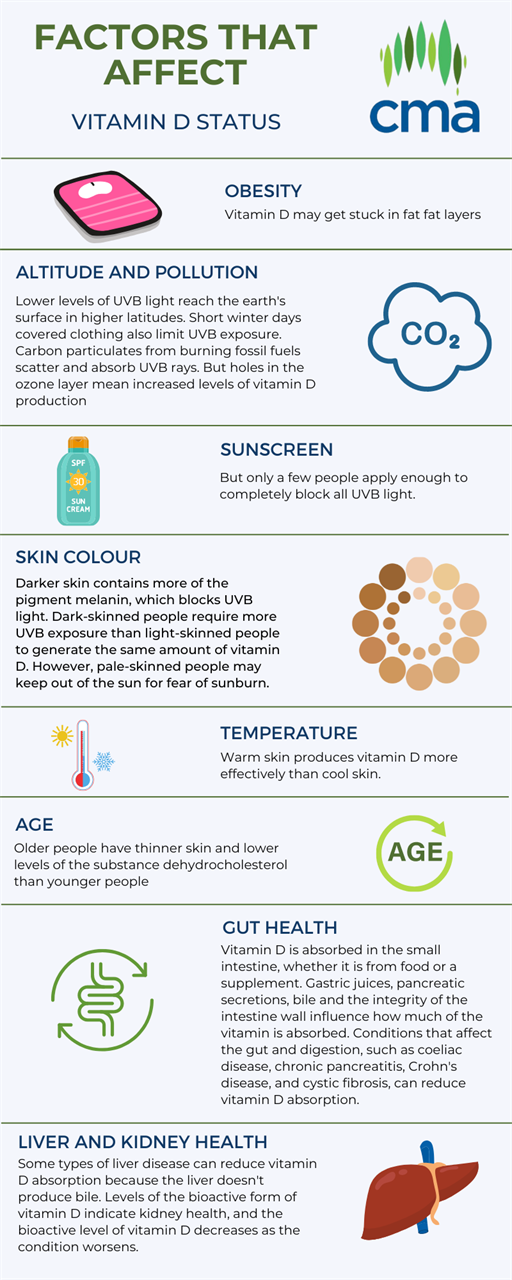Recently, research confirmed that people who are overweight appear more likely to have low vitamin D levels than people within a "normal" weight range. It may be that because vitamin D is a fat-soluble vitamin it gets "stuck" in fat layers and is thus not available for use. Thus researchers suggest that losing body fat is one way to enhance vitamin D status. There are also several other factors that can affect vitamin D status.

The body produces vitamin D in a complex process that starts (UVB) light spectrum and is absorbed by the skin.
The action of sunlight on dehydrocholesterol in the skin produces most of our vitamin D, followed by metabolism in the liver and the kidneys; this eventually results in a bioavailable form.
Here are eight more factors that can influence vitamin D levels:
1. Where you live. Lower levels of UVB light reach the earth's surface in higher latitudes. Short winter days covered clothing also limit UVB exposure.
2. Pollution. Carbon particulates from burning fossil fuels scatter and absorb UVB rays. But holes in the ozone layer mean increased levels of vitamin D production.
3. Sunscreen. We are familiar with Australia's Slip Slop Slap sun safe message. Sunscreen protects by blocking UVB light, so sunscreen use lowers vitamin D levels. But only a few people apply enough to completely block all UVB light.
4. The colour of your skin. Darker skin contains more of the pigment melanin, which blocks UVB light. Dark-skinned people require more UVB exposure than light-skinned people to generate the same amount of vitamin D. However, pale-skinned people may keep out of the sun for fear of sunburn.
5. Temperature. Warm skin produces vitamin D more effectively than cool skin.
6. Your age. Older people have thinner skin and lower levels of the substance dehydrocholesterol than younger people.
7. Gut health. Vitamin D is absorbed in the small intestine, whether it is from food or a supplement. Gastric juices, pancreatic secretions, bile and the integrity of the intestine wall influence how much of the vitamin is absorbed. Conditions that affect the gut and digestion, such as coeliac disease, chronic pancreatitis, Crohn's disease, and cystic fibrosis, can reduce vitamin D absorption.
8. Liver and kidney health. Some types of liver disease can reduce vitamin D absorption because the liver doesn't produce bile. Levels of the bioactive form of vitamin D indicate kidney health, and the bioactive level of vitamin D decreases as the condition worsens.



